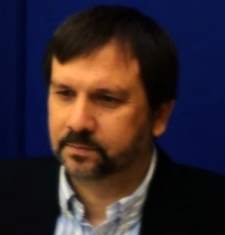Steven A. Garan
Steven A. Garan is the Director of Bioinformatics at the Center for Research & Education on Aging (CREA) and serves on its Advisory Board. He is researcher at the Lawrence Berkeley National Laboratory and while at the University of California, Berkeley, he played a major role in the invention and the development of the Automated Imaging Microscope System (AIMS).
At UC Berkeley, Steven collaborated for many years with a group from Paola S. Timiras’s lab, on the role that caloric restriction plays in maintaining estrogen receptor-alpha and IGH-1 receptor immunoreactivity in various nuclei of the mouse hypothalamus.
Steven currently serves as CTO at Trans Time. Their motto is Caring for people in the San Francisco Bay Area and Nationally and were featured in the local Las Vegas news KSNV Cryogenics: Can a company really help you live forever? Transtime is one of just three places in the world offering cryonics.
Steven was also the director of the Aging Research Centre, and is a leading scientist in the field of aging research. His numerous publications, include articles on systems biology, the effects of caloric restriction on the mouse hypothalamus, and on the Automated Imaging Microscope System (AIMS). He is best known for the coining of word “Phenomics”, which was defined in an abstract titled: Phenomics: a new direction for the study of neuroendocrine aging, that was published in the journal Experimental Gerontology.
Steven was the lead scientist that developed the AIMS system along with Warren Freitag, Jason Neudorf, and members of the UC Berkeley lab where AIMS was developed and utilized. Many journals articles have been published about the system and the results that it produced. Since the completion of the first version in 1998, newer versions were developed, with the final version being completed in 2007.
Empowering investigators to accurately count specific cell populations is essential to all fields of neurobiology. While computer assisted counting technology has been in use for over a decade, advances in an Automated Imaging Microscope System (AIMS), now insure 97% accuracy when comparing computer counts to human counts for both nuclear and cytoplasmic stained tissue.
More importantly, regional analysis can now be customized so that only cell populations within specified anatomic regions will be targeted for counting, thus reducing the background noise of non-immunoreactive cells when characterizing specific cell populations. This application was recently used to successfully map the density and distribution of both nuclear expressed estrogen receptor-alpha and cytoplasmicly expressed IGF-1 receptor in specific hypothalamic nuclei.
Furthermore, AIMS can now detect intra-hypothalamic differences in receptor expression and can measure phenomenon such as lateralization. By using this technology, the evaluation of tissue-level biology can be used to establish neuroendocrine biomarkers of aging, and analyze the neuroendocrine effects of caloric restriction and gene knockout models that extend the lifespan.
The mission of CREA is to investigate the basic processes that cause aging, with the goal of improving and extending human health span. CREA integrates the efforts of cell and molecular biologists, structural and computational biologists, geneticists, physiologists, and public health professionals, who are the intellectual assets and resources of the University of California, Berkeley and the Lawrence Berkeley National Laboratory.
Visit his CREA Berkeley page. You can find his publications at PubMed and Google Scholar. See also his page at Neuroendocrinology Letters.
